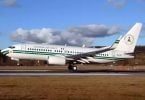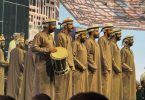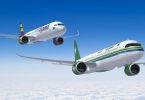Flying has apparently lost lots of the glitz and glamor that used to be associated with it, both for crews and for passengers, if frequent reports in eTN are anything to go by about travellers’ experiences, in particular in North America.
Constant cuts in service levels, (and pay, terms, and conditions for the crews) combined with equally constant new charges being invented to have passengers part with extra money, have made flying almost a kiosk-type bus ride in the sky, with the added intrusive and often unnerving security checks driving, at times, even the calmest and most frequent of travelers nuts.
Low service has become part of many airlines, not necessarily because that particular carrier is truly low cost, but because airline executives seem to believe in the “minimax” principle, trying to charge ever more for ever less, and encouraged because they appear to get away with it. In fact, every airline around the globe must either manage to lower their cost or must go out of business – the Lufthansa CEO Wolfgang Mayrhuber intimated this last week, when he set his targets at a 40 percent cost cut for LH’s European routes.
In Africa, flying is on many of their regional routes more expensive than in other parts of the world, when looking at the same distances flown, and true low-cost airlines are far and few between – in East Africa only Fly 540 is a dedicated LCC, while others try to be poor copycats, but not apparently understanding the concept. That said, load factors on the East African regional and domestic routes remain remarkably high and passengers do demand, and get, full service on board their chosen airline.
A flight from Entebbe to Nairobi, Dar es Salaam, or Johannesburg for instance, depending on the time of day, attracts a continental breakfast, a light lunch or supper meal or at least a snack, plus drinks, of course – often with free beers and wine – and that is in economy class. Business-class passengers can expect a warm breakfast, a choice of menu for both lunch and dinner, and during off-meal periods, at least a cold platter and some salad besides the larger selection of drinks available.
Coming to the long-haul flights, many of which leave East Africa for Europe as overnight flights and an added dimension comes into play, seat comfort in the cabin becomes a very important factor, besides in flight entertainment, catering, and the service levels offered by the crew.
Most airlines flying into Entebbe offer a 32-inch pitch in economy class and the latest generation of Y-class seats is offering better sitting comfort and reclines compared to those dreaded narrow gaug’ contraptions used in the past. Service in the cabin normally includes a dinner soon after reaching cruising altitude out of Entebbe and a breakfast before arrival at the European airport. The availability of reading materials may have been scaled down in economy class, partly to save weight but also to save the cost of purchasing it, but the latest film releases, of course adapted for the wide audience on the flight being able to see them, including kids, are available even in the main cabin, and can now mostly be watched through personal screens on the backrest of the seat in front.
Upfront, however, a real revolution has taken place over the past decade, as several airlines now offer flat bed or almost flat bed seats in business class – previously strictly found in the First-class cabin – giving passengers a more realistic chance to sleep while in flight and arriving at the destination ready to put in an immediate day’s work.
A lot of airlines have abandoned the traditional First Class from their aircraft – Emirates being one of the notable exceptions on flights to Entebbe – but since then, enhanced their business-class section to remain attractive for full fare and premium passengers. Laptop power sockets, individual large TV screens, and a variety of films and other video and audio entertainment available on demand – able to last throughout the trip – give premium passengers the choice of either working on the large fold-out tables, enjoying the latest film releases, sampling the constant flow of snacks and meals, accompanied by a fine selection of wines and spirits, or simply putting the eyeshades on after takeoff, telling the crew when to deliver a wakeup call, and sleeping during at least some of the flight hours.
My most recent flying experience to Europe took place on a Brussels Airlines’ A330, which of course also offers the much-in-demand, almost-flat-bed seats, maintained the savoir vivre in the air by offering enhanced lounge comfort for connecting passengers in Brussels, including shower and silent rest facilities, fast track premium passengers through express channels bypassing the long queues at immigration and security check points, a separate boarding entrance for premium passengers, and – another crucially important plus – delivery of bags for premium passengers first for a swift get away from the airport both in Brussels and back home in Entebbe. On the return flight, the weather permitted magic views right across the snow-covered alpine mountain peaks, of course not visible during the night flight into Europe a few days earlier.
Brussels Airlines, now operating under Lufthansa’s Miles and More frequent flyer program, presently offers a 20 percent extra miles credit as a further incentive to their regular passengers, which earns them valuable added credits to burn at global partner outlets.
SN comes highly recommended by this correspondent, who after countless flights over the past decades, admittedly most of the times as a passenger in the front cabins, can offer a well-founded opinion as to the quality of the overall product experience of pre-, during-, and post-flight performance of any airline, and SN on this occasion excelled throughout.





















